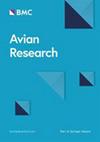基于可解释机器学习的城市公园三维环境特征对鸟类多样性的影响建模——以哈尔滨市为例
IF 1.7
2区 生物学
Q1 ORNITHOLOGY
引用次数: 0
摘要
城市公园是鸟类在密集建筑环境中必不可少的栖息地。然而,大多数研究只关注水平特征,忽视了综合垂直结构的作用。利用中国鸟类报告(CBR)收集的2020 - 2024年间的鸟类记录,本研究将重点放在中国东北高纬度寒冷城市哈尔滨的主要城市公园上。利用可解释的机器学习模型,我们评估了三维(3D)公园特征对鸟类物种丰富度的影响,并确定了关键变量及其非线性关系。在此基础上,对鸟类进行了生态特征分组,并运用排序分析方法,评价了鸟类对城市公园三维环境特征的差异丰度响应。结果表明:(1)城市公园三维环境特征对鸟类丰富度有一定影响,其中建设用地干扰和商业建筑覆盖是最重要的影响因素;(2)不同鸟类类群对城市公园三维环境特征的响应不同。水鸟和通才鸟更倾向于以水、湿地和高植被为主的混合生境,并表现出明显的用地扰动边缘效应。相比之下,森林鸟类主要受绿地配置的影响。尽管它们表现出对人类干扰的耐受性,但这种趋势可能会增加生物同质化的风险。本研究采用横向和纵向相结合的三维环境框架,探讨了鸟类多样性的形成过程,为哈尔滨市生物多样性敏感型公园规划提供了详细的建议。本文章由计算机程序翻译,如有差异,请以英文原文为准。
Modeling the effects of urban park 3D environmental features on bird diversity with interpretable machine learning: A case study of Harbin, northeastern China
Urban parks are essential habitats for birds in densely built environments. However, most studies focus only on horizontal features, overlooking the role of integrated vertical structures. Using bird records from the China Bird Report (CBR) collected between 2020 and 2024, this study focused on major urban parks in Harbin, a cold high-latitude city in Northeast China. Using interpretable machine learning models, we assessed the impact of three-dimensional (3D) park features on bird species richness and identified key variables along with their nonlinear relationships. Subsequently, we grouped bird species by ecological traits and applied ordination analysis to assess their differential abundance responses to the 3D environmental characteristics of urban parks. Results showed that: (1) urban park 3D environmental features had a certain influence on bird richness, among which disturbance from built-up land and the coverage of commercial buildings were the most important factors; (2) different bird groups responded differently to the urban park 3D environmental features. Specifically, waterbirds and generalist birds preferred mixed habitats dominated by water, wetlands, and tall vegetation, and exhibited significant edge effects caused by built-up land disturbance. In contrast, forest birds were mainly affected by greenspace configuration. Although they showed tolerance to human disturbance, this trend may increase the risk of biotic homogenization. The study used a 3D environmental framework integrating horizontal and vertical dimensions to explore how bird diversity is shaped, providing detailed recommendations for biodiversity-sensitive park planning in Harbin.
求助全文
通过发布文献求助,成功后即可免费获取论文全文。
去求助
来源期刊

Avian Research
ORNITHOLOGY-
CiteScore
2.90
自引率
16.70%
发文量
456
审稿时长
46 days
期刊介绍:
Avian Research is an open access, peer-reviewed journal publishing high quality research and review articles on all aspects of ornithology from all over the world. It aims to report the latest and most significant progress in ornithology and to encourage exchange of ideas among international ornithologists. As an open access journal, Avian Research provides a unique opportunity to publish high quality contents that will be internationally accessible to any reader at no cost.
 求助内容:
求助内容: 应助结果提醒方式:
应助结果提醒方式:


